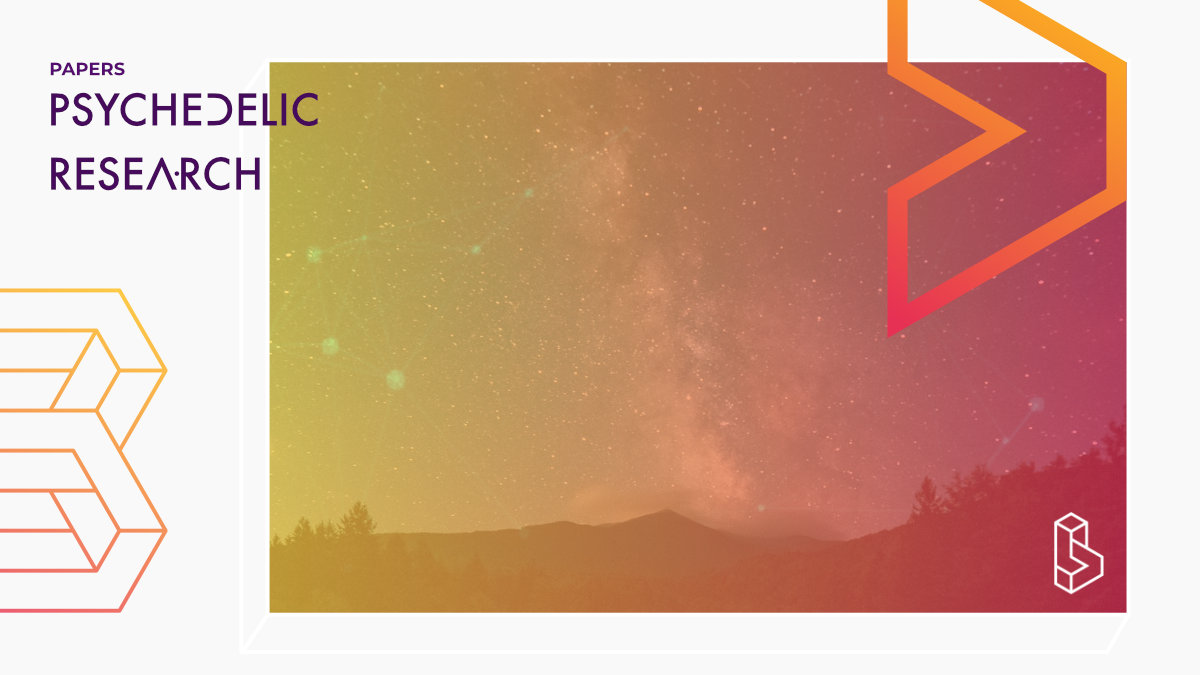This follow-up analysis (n=13) of data from a DMT study (7-20mg iv) describes in detail how it’s metabolised in the brain (clearance of 26 L/min). A simulation (100 people at doses from 1-10mg) was then employed to delineate further DMT’s effects (both the chemistry and the subjective effects). This is the first study to explore DMT’s pharmacokinetics and -dynamics.
Abstract
“N,N-dimethyltryptamine (DMT) is a psychedelic compound that is believed to have potential as a therapeutic option in several psychiatric disorders. The number of clinical investigations with DMT is increasing. However, very little is known about the pharmacokinetic properties of DMT as well as any relationship between its exposure and effects. This study aimed to characterize population pharmacokinetics of DMT as well as the relationship between DMT plasma concentrations and its psychedelic effects as measured through subjective intensity ratings. Data was obtained from 13 healthy subjects after intravenous administration of DMT. The data was analyzed using nonlinear mixed-effects modelling in NONMEM. DMT plasma concentrations were described by a two-compartment model with first-order elimination leading to formation of the major metabolite indole 3-acetic acid. The relationship between plasma concentrations and psychedelic intensity was described by an effect site compartment model with a sigmoid Emax response. DMT clearance was estimated at 26 L/min, a high value indicating elimination of DMT to be independent of blood flow. Higher concentrations of DMT were associated with a more intense experience with an EC50,e estimated at 95 nM. The maximum achievable intensity rating was 10 and the simulated median maximum rating was 0, 2, 4, 8 and 9 after doses of 1, 4, 7, 14 and 20 mg respectively. The model can be useful in predicting suitable doses for clinical investigations of DMT based on the desired intensity of the subjective experience.”
Authors: Emma Eckernäs, Christopher Timmermann, Robin L. Carhart-Harris, Daniel Röshammar & Michael Ashton
Study details
Compounds studied
DMT
Topics studied
Safety
Healthy Subjects
Study characteristics
Follow-up
Participants
13
Humans
Authors
Authors associated with this publication with profiles on Blossom
Chris TimmermannChris Timmerman is a postdoc at Imperial College London. His research is mostly focussed on DMT.
Robin Carhart-Harris
Dr. Robin Carhart-Harris is the Founding Director of the Neuroscape Psychedelics Division at UCSF. Previously he led the Psychedelic group at Imperial College London.
Linked Research Papers
Notable research papers that build on or are influenced by this paper
N,N-dimethyltryptamine affects EEG response in a concentration dependent manner – a pharmacokinetic/pharmacodynamic analysisThis re-analysis (n=13) of EEG (brain activity over time) data whilst under the influence of DMT (7-20mg iv) is the first to show a concentration-dependent suppression of alpha power (brain waves), which was partially true for beta power too. The (Lempel-Ziv) complexity of brain signals increased whilst under the influence of DMT.
Neural correlates of the DMT experience assessed via multivariate EEG
This placebo-controlled EEG study (n=13) found that DMT reduces (oscillatory power) activity in the alpha and beta bands and increases them (especially at the peak) in the delta and theta bands.

